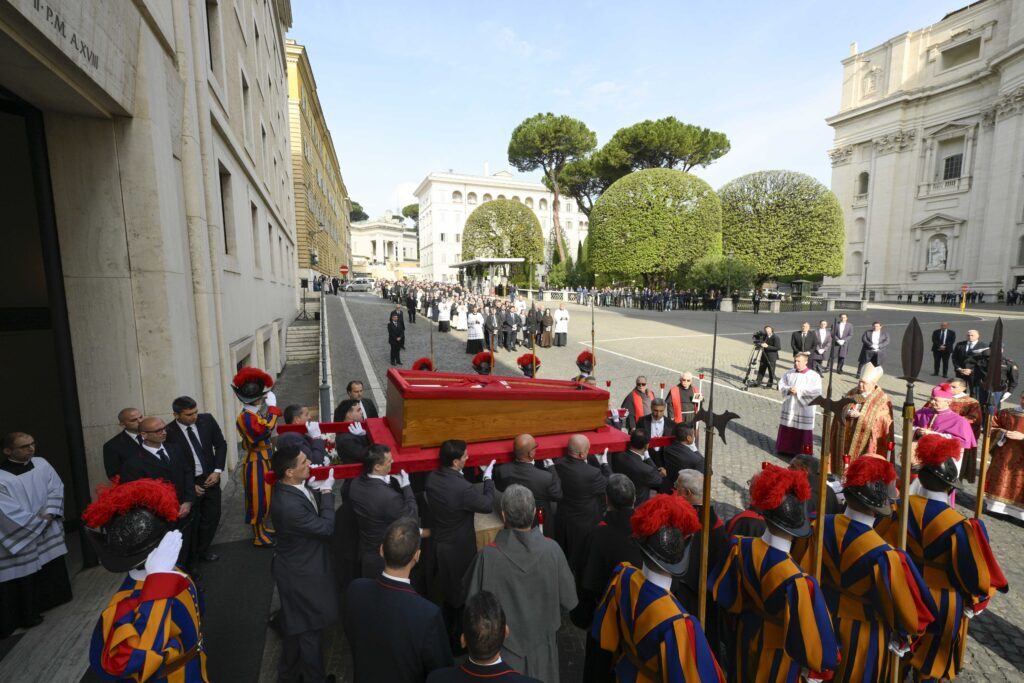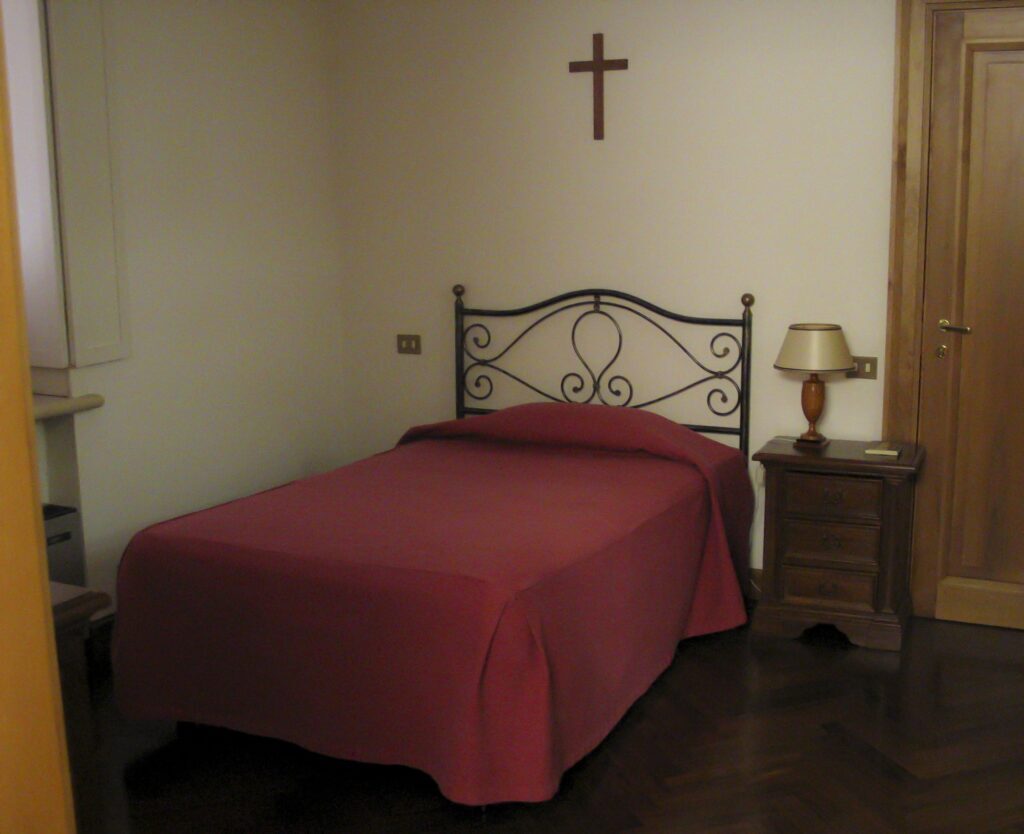VATICAN CITY (OSV News) — In the heart of Vatican City, the usually quiet Casa Santa Marta is abuzz with workers, engineers, and Vatican officials transforming the guesthouse that was the residence of Pope Francis into a secure, secluded place of lodging that would put Fort Knox to shame.
With the 2025 conclave to elect Pope Francis’ successor set to begin on May 7, the Vatican guesthouse is now preparing to house 128 of the 133 cardinal electors that are expected to be present during the conclave, according to a source who asked not to be named.
This change from a general hotel to a secure dormitory for cardinals participating in the conclave became evident April 29, when all permanent residents, including some cardinals who have had a room there for years, were required to vacate their rooms. According to a Vatican official with firsthand knowledge of the preparations, many will return to the same rooms once the conclave begins, but only after each room is inspected, secured and sealed.
The following day, staff from the Vatican Governorate began a weeklong overhaul of the facility. Every detail — from the locks on the doors to the alignment of the shutters — is under review. The kitchen, temporarily closed, is undergoing deep cleaning to meet conclave protocols. Even the underground garage has been repurposed as a logistics hub, where clean linens, fresh food, and other essentials will be distributed under the careful supervision of Vatican security.

Though often associated with comfort, the guesthouse is not a hotel in the traditional sense.
“There’s no minibar or room service,” the official noted. “Some residents had small fridges, but during the conclave, the focus is simplicity and security, not convenience.” Room service? Out of the question, unless you are a convalescing guest.
The kitchen will be staffed by the same small team that normally serves Santa Marta: two young Italian cooks and a female chef from Africa. The menus — while not luxurious — are expected to be high-quality and tailored to the health needs of the cardinals, including those who are diabetic, gluten-intolerant, or require special diets.
While Matteo Bruni, director of the Vatican press office, said during the May 2 press briefing in the Vatican that he “doesn’t have precise indications” on how many cardinals will stay outside of Santa Marta, the source told OSV News that, as the hotel has 129 rooms, there will be space for 128 electors. The room previously used by Pope Francis is sealed until the new pope opens it.
The remaining cardinals, the source said, will be housed in the adjoining “Old Santa Marta” building, which is physically connected to the newer structure. Alongside the cardinal electors, some 70 to 80 support personnel — nurses, doctors, liturgical assistants, servers and cooks — will remain on hand, all bound by an oath of secrecy and isolated from the rest of the world.
That oath is no symbolic gesture. The same Vatican official confirmed that every person inside the conclave environment — whether a cardinal, layperson, priest, or bishop — will be subject to excommunication if they violate the conclave’s strict secrecy rules. Phones, tablets, laptops, radios and televisions will be confiscated, placed into sealed bags labeled with each cardinal’s name, and held in reserve until the conclave concludes.
“Even the windows will be sealed, including the shutters, so no one can so much as glance outside,” the source said.
Every cardinal’s room will be sealed after inspection to ensure it contains no means of communication with the outside world. These seals will only be broken once the cardinal-elector arrives and takes possession of the room, always in the presence of the Swiss Guard or Vatican gendarmes.

These security measures are deeply rooted in church tradition. The word “conclave” itself comes from the Latin “cum clave” — literally “with a key” — evoking the image of the cardinals locked in seclusion until they elect a new pope. The practice of locking electors dates back to the conclave of 1271, which followed nearly three years of deadlock and political interference. In response, Pope Gregory X formalized the conclave process in 1274 with the constitution
“Ubi periculum,” requiring strict isolation and continuous voting.
Secrecy became even more vital in the modern era. During the 1903 conclave, Emperor Franz Joseph of Austria exercised a long-standing but controversial right to veto a candidate — Italian Cardinal Mariano Rampolla — through a representative inside the Sistine Chapel. Though the veto failed to prevent Rampolla from receiving significant support, it likely influenced the cardinals’ final decision. As a result, the newly elected Pope Pius X swiftly abolished the veto and any secular interference in papal elections.
That commitment to autonomy was reaffirmed by St. John Paul II in 1996 with his apostolic constitution “Universi Dominici Gregis,” which governs modern conclaves. The document outlines everything from the required two-thirds majority vote to the penalties for breaking the oath of secrecy. It was later amended by Pope Benedict XVI and Pope Francis to reflect changes in technology and church governance.
This year’s conclave presents both logistical and spiritual challenges. For the first time, the number of cardinal electors exceeds the 120-cap set by Pope Paul VI in 1970, prompting adjustments to accommodate all participants without compromising the conclave’s integrity.
Still, the essence remains unchanged. As the cardinals continue meeting in Rome — with only a handful of the 133 electors missing — the Vatican is quietly locking the doors, sealing the windows, and preparing the rooms of what is now one of the most famous hotels in the world — and out of which will emerge the next pope.
Ines San Martin writes for OSV News from Rome.




